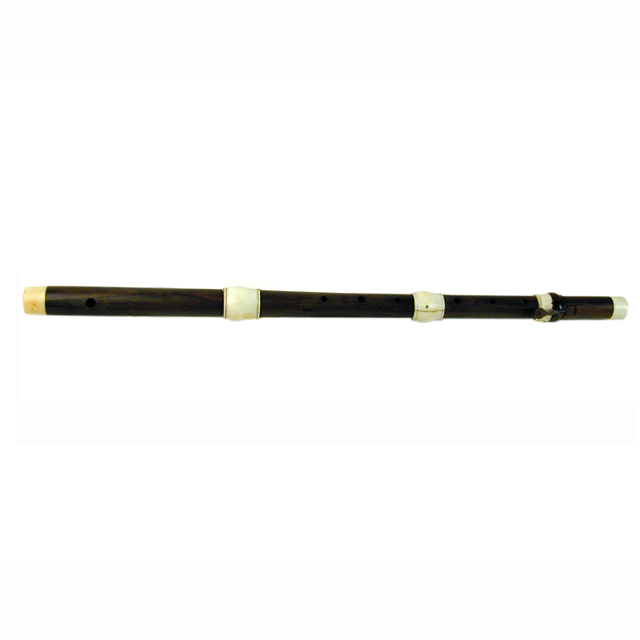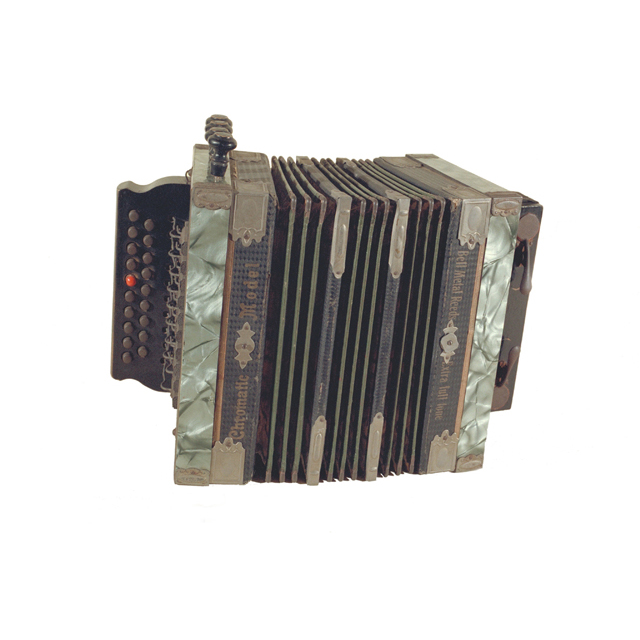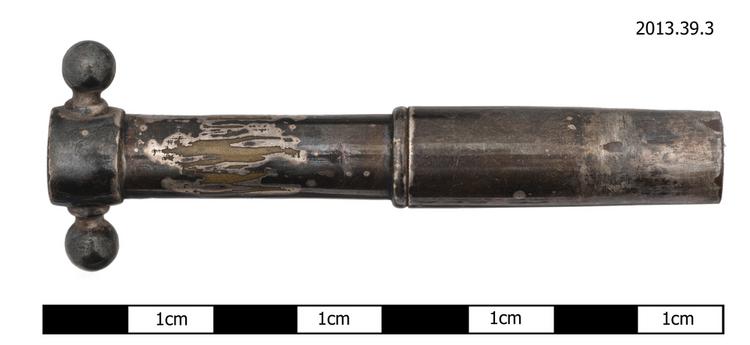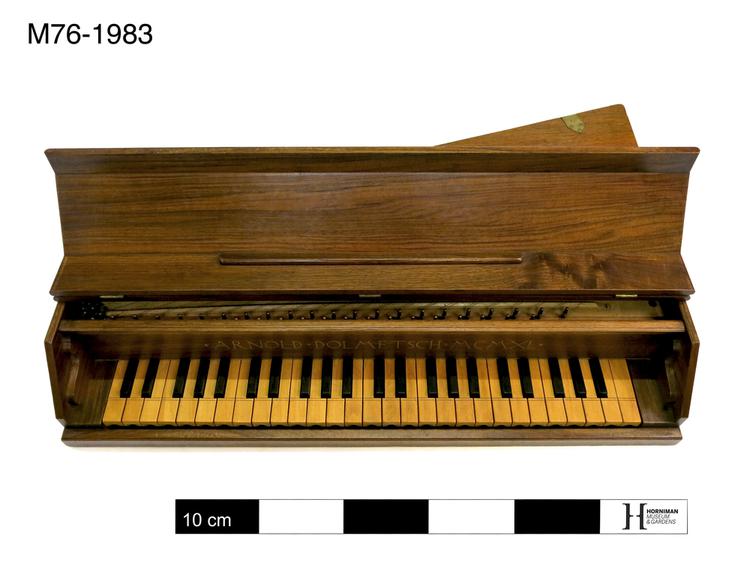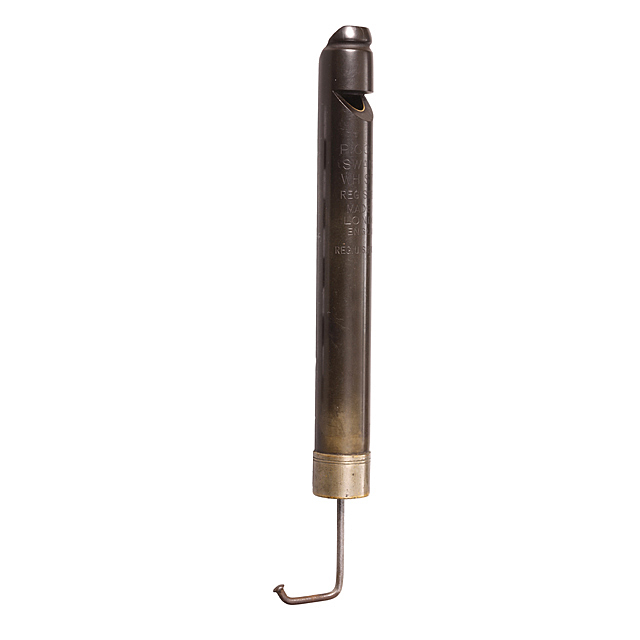
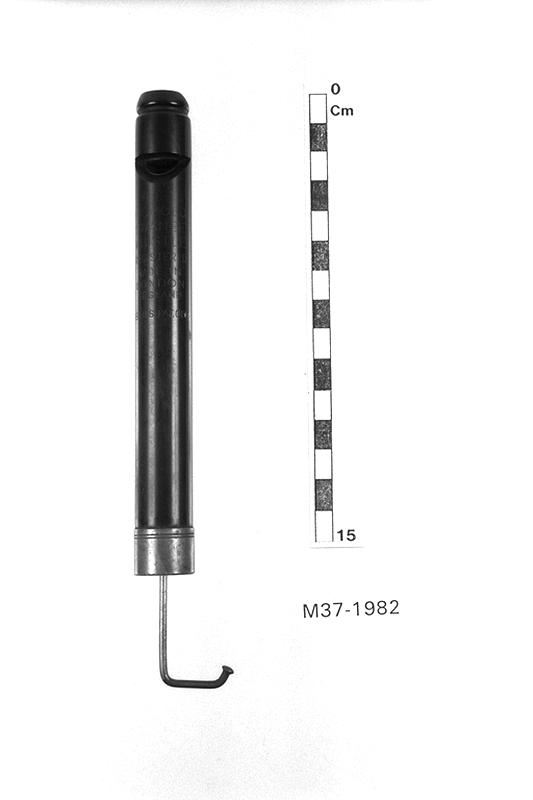
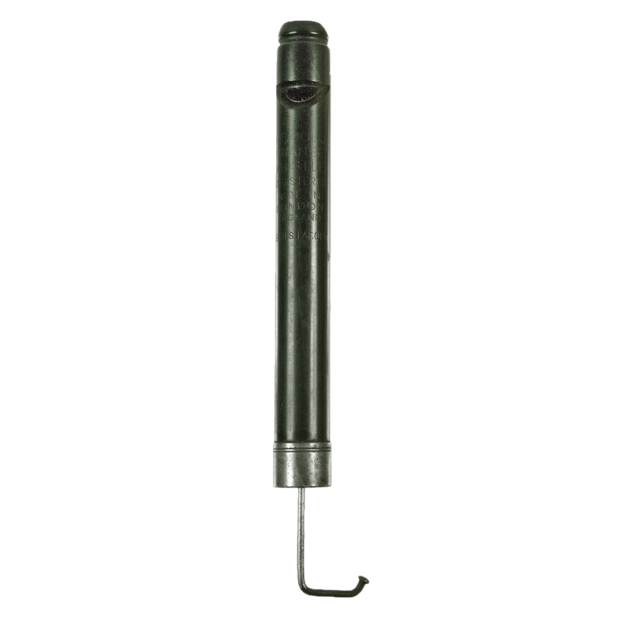
Swanee whistle. Wooden duct flute with end blown mouthpiece and beveled metal base. A metal movable piston is inserted into base of instrument, with its handle bent over at 90 degrees. At the top of the cylinder is stamped: PICCOLO / SWANEE / WHISTLE / REGISTERED / MADE IN / LONDON / ENGLAND / REG. U.S. PATENT OFF.
Made in London in the 20th century, this swanee whistle (also known as a slide whistle or piston flute) is a wind instrument consisting of a mouthpiece and a tube with a movable piston in it. Whilst blowing, the hand-operated piston is used to produce glissandi (sliding pitches). This aspect means that the instrument is commonly used to provide sound effects, and most usually for denoting rapidly ascending or falling objects, for example in animated cartoons. To fans of 1970s BBC children's television, the instrument will always be associated with the voices of the 'Clangers'. Although thought of mainly as a toy, several composers have made use of the instrument including Maurice Ravel in his opera, 'L'enfant et les sortilèges', first performed in 1925.




